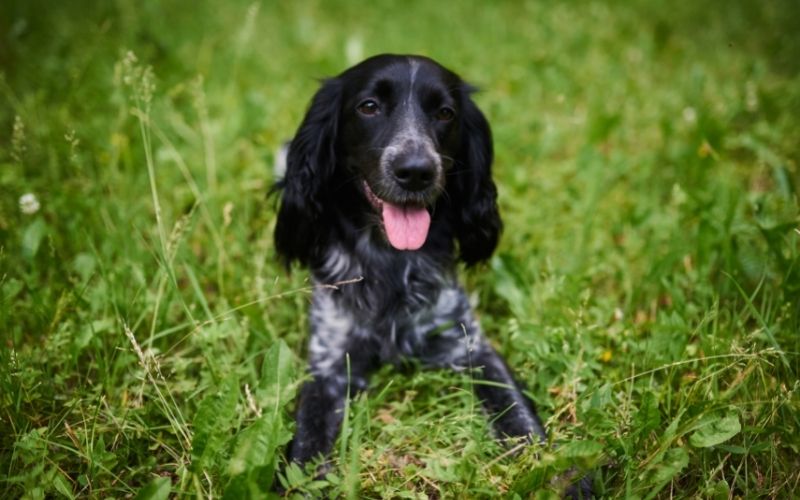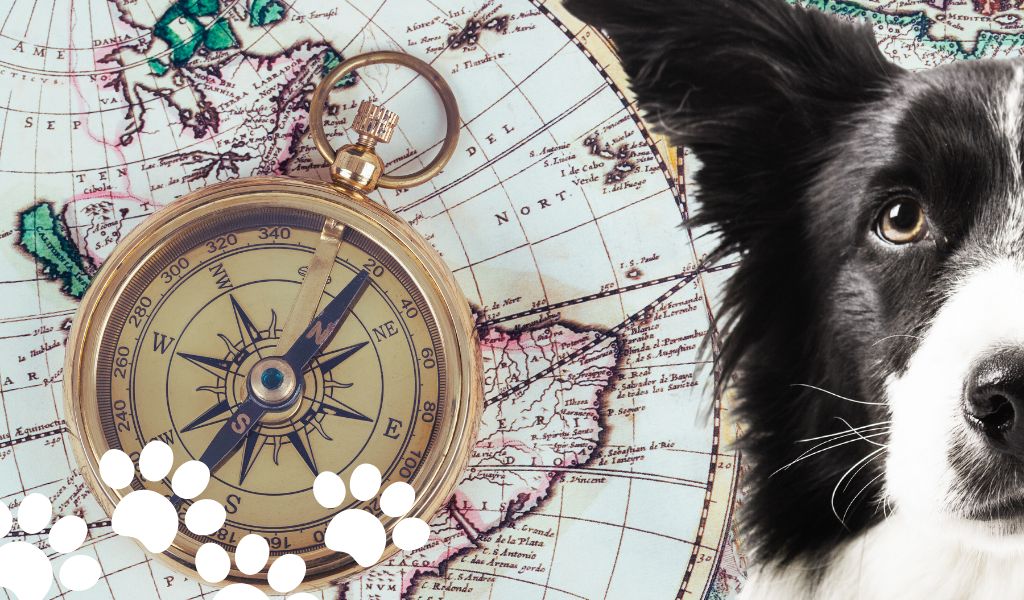As a new or inexperienced owner of a spaniel, you may be wondering how to train it.
There is no one right way to train a spaniel, but there are some tips that can help.
To train your spaniel, you need to be consistent and patient. Always provide clear and concise commands, and reward good behaviour. Start with basic commands such as ‘sit’ and ‘stay,’ before moving on to more advanced commands. Put in the time and effort, as training a spaniel is a fun and rewarding experience.
Where to begin with spaniel training
It’s tempting to rush when you have your first spaniel but the most important thing is to take your time.
You’ll come across individuals that claim that their young dog is retrieving, sitting to the whistle, dropping to shot and doing all sorts of advanced spaniel ‘stuff’ but, the reality is probably very different and they will have trouble ahead.
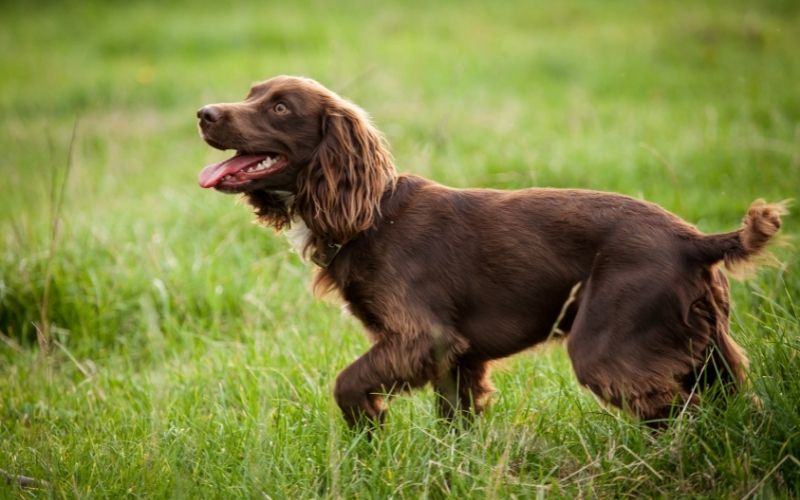
Don’t be in a rush. Spaniels are often very soft and sensitive and you’ll need to take things easy, particularly in the early days, when your dog is a youngster.
If you overdo it too soon then your dog can lose confidence and even be afraid of you and training sessions.
So tread carefully and slowly.
What are the first things that you should teach a spaniel?
When you get your puppy then there are really two things that you need to think about, these are:
Sitting down when told to – this is really easy to do and this ‘training’ begins with mealtimes – I’ve a comprehensive article on how to introduce your spaniel puppy to the ‘sit’ command and I’d suggest that you head across to read it.

The second, and another important command, is to get your puppy to come back to you whenever you call his name.
To do this, of course, your dog needs to know his name, so focus on getting him familiar with his name first ( otherwise how will he know to come back when you call him?).
Returning when called is really important and when you are out and about you’ll see evidence of loads of dogs that don’t come back, which is why they are always on their leads and never let loose.
To see how easy it is to get your spaniel familiar with coming back and the way to get started it’s probably best to take a look at my article on returning when called which will set you off on the right track.
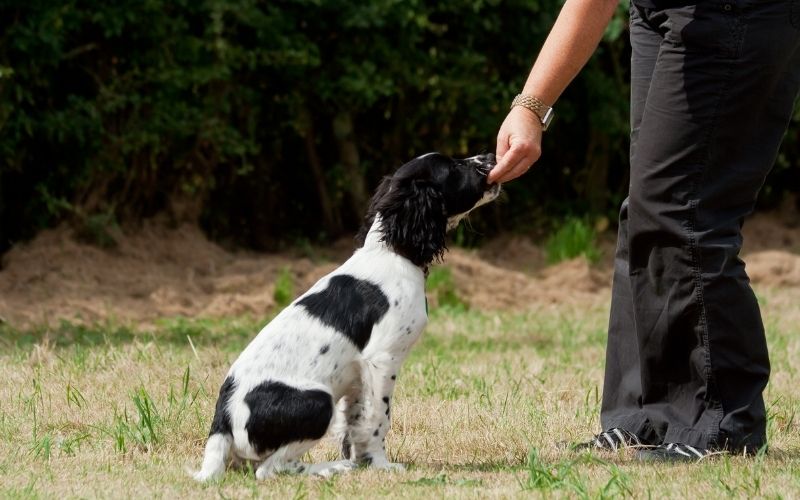
Reward based training always works best
Dogs think differently from people and don’t understand right from wrong ( having said that there are some humans that seem to think like this too..).
Punishing a dog has no effect on their future behaviour as the dog has no idea why it is being punished and all you’ll achieve by using punishment is to make the dog frightened.
The most effective way of embedding an action in a spaniel ( or any other dog ) is to reward it when it gets something right.
For example: an edible treat given when your spaniel answers his name and comes back is far more effective ( and likely to lead to him coming back again ) than a beating given when he doesn’t return.
So, focus on reward and try to ignore what we might call ‘bad behaviour’.
[amazon box=”1846890705,1853104191,1846893151″ grid=”3″]
Housetraining
If your spaniel is going to live in the house then you will need to deal with housetraining.
I do have a comprehensive article on this subject ( which you can read here ) but one thing that I will say now is that you IGNORE the ‘advice’ given by those people that say to use a crate.
Locking a dog inside a crate to ‘housetrain it’ is akin to cruelty and nothing more than laziness and inattentiveness on the part of the owner.
A dog that is locked in a crate will learn nothing about not peeing in your living room and will still use your house as a toilet.
By making the effort you will be able to easily housetrain your spaniel puppy.
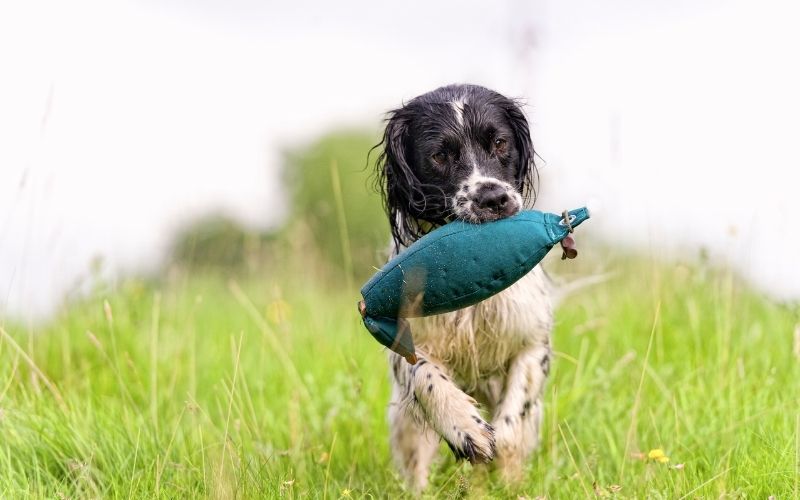
Learning how to fetch
This is a fun game and something that you can play with your spaniel while he is still a puppy.
Soft toys or rolled up socks are the best things to play with, just wave them around in front of your puppy’s nose to get him excited and them throw them down the hallway or similar where he can see them.
Don’t try to keep him steady but, as soon as your throw them say ‘Fetch’ and let him get them.
It’s a great game to play.
Again I’ve an article on this here which will help you.
Hunting
As your spaniel gets older and stronger you’ll want to get him/her hunting and this is another fun activity that, thankfully, comes naturally to most spaniels.
You should spend as much time as you can exploring with your dog, encouraging him to get into different types of cover, such as rushes, bracken, fallen trees etc – and you should go in with him to show him how much fun it is.
Hunting with a spaniel is great fun – they love the activity.
I’ve written a great article here that will help to learn more about it and how to get your spaniel hunting well.
Sitting at a distance
As your spaniel gets older you’ll need him to sit down and stay, or sit at a distance – maybe while you walk away to pick something up or maybe while he’s away from you and you need him to wait.
This takes time and is a case of steady progression with training and you can read how train your spaniel to sit at a distance here.
Stopping on the whistle
An advanced spaniel training command necessary for all working spaniels.
You build this command into the sit command and the sit at distance command and it’s another step in your spaniel’s development.
I cover this subject in my article here stopping on the whistle.
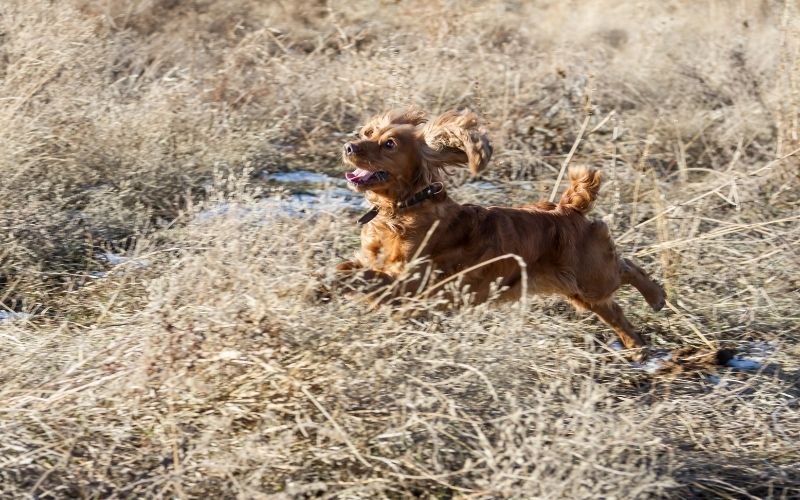
Other tips on spaniel training
Over the years I’ve learned a few things about spaniel training which you may find helpful:
Take your time – don’t rush and don’t listen to how great other peoples’ dogs are.
Always be positive when you are training and try to help your spaniel to be enthusiastic.
Pay attention to what your dog is doing when you ‘go for a walk’. If you spend anytime with an experienced dog trainer then you’ll notice that when out walking with them they’ll appear distracted and maybe you’ll even think that they are ignoring you.
That’s not the case – they are watching their dogs. Many owners miss this – be attentive.
Train in different places – don’t be tempted to visit the same place whenever you do your training.
Mix it up and visit different locations to keep your spaniel interested. This goes for walks too. Make the walk an adventure – dogs like variety just like people.
Don’t train when you’re tired or when the dog is tired. Similarly don’t do any training if you are unwell or if your spaniel is off colour. Have a few days off, it won’t do any harm.
If the training session is going pear shaped, and there will be sessions where nothing goes right, then stop.
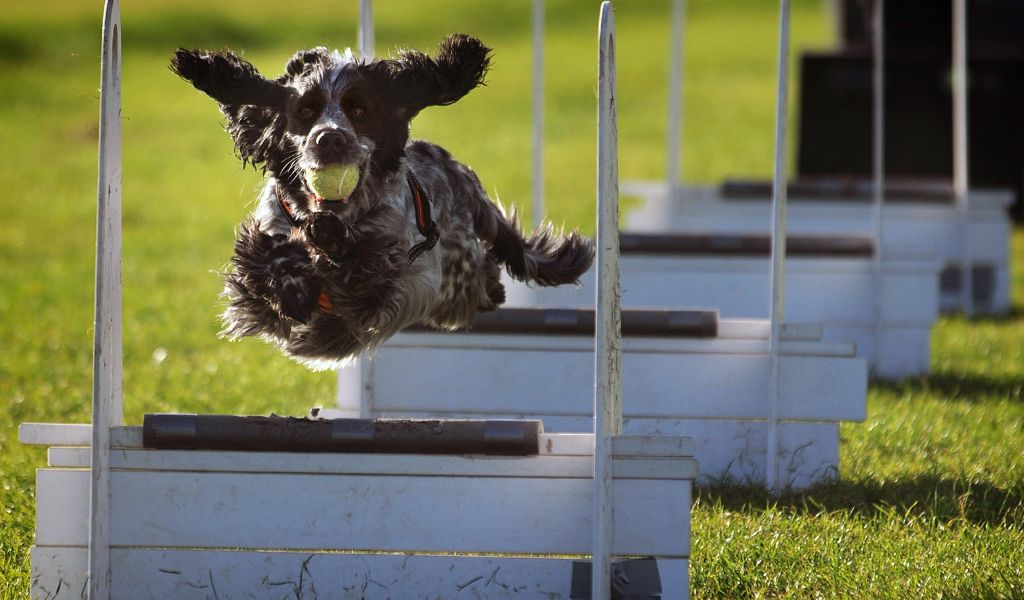
Go home, have a break for a couple of days, and then, when training, do something different, that your spaniel can do easily. Keep things positive.
If your spaniel is struggling with his training then stop and take time out to have a think about what could be going wrong.
Is it the location/the time of day/the weather/are there distractions. I’ve even had situations where my coat affected the dog – bizarre but true. Take time to think things through.
If the weather is foul then stay at home or just go for a walk.
There’s no point in even attempting any training when it is pouring with rain/sleet/snow/hail or blowing a gale – both you and your dog will hate the experience.
Remember try to keep training a pleasurable and fun time.
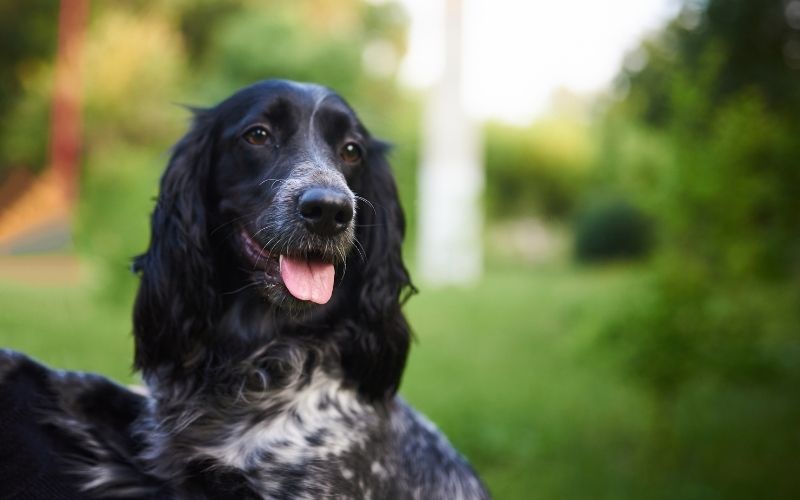
Learn as much as you can
There are lots of great resources available that can help you to train a spaniel – some from people that train spaniels and others from people that spend their time with other breeds.
Try to develop your knowledge and experience of spaniel training and the wider dog training sphere ( there are lots of good ideas among non spaniel trainers which can help you ).
Final words
It is a satisfying moment when all of your hard work and effort is realised when your spaniel receives his/her first award in a spaniel field trial or when they fetch their first retrieve on a shoot or stop when they flush a bird or rabbit.
As a pet owner when you see your spaniel running back to you when called, with his tongue hanging out and a big smile on his face, knowing that you have a happy, well trained pet is a justifiable reward for the time that you have both spent training together.
Spaniel training is not difficult. Just take your time and take the time to learn as much as you can.

